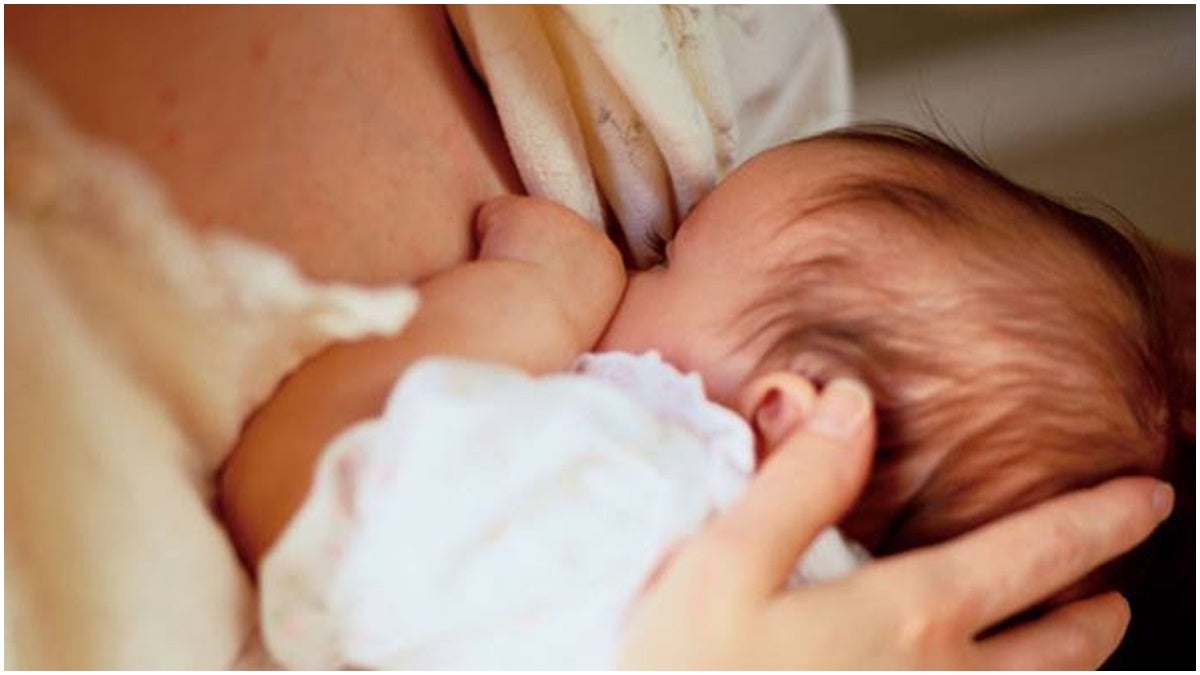Delaware hospitals score big in breastfeeding support
Listen
(Breastfeeding Coalition of Delaware photo)
Maternity hospitals in Delaware rank second in the country for their support of breastfeeding mothers.
Rhode Island earned the top spot in the Centers for Disease Control and Prevention’s 2015 national survey of Maternity Practices in Infant Nutrition and Care (mPINC), with a score of 96. The First State’s score of 90 tied it for second place with New Hampshire.
This was Delaware’s highest score in the history of the survey, up from 86 in 2013 and 63 in 2007.
All eligible Delaware hospitals participated in the survey, which measures infant feeding care practices, policies, and staffing expectations in place at labor and delivery hospitals.
“Breastfeeding is a public health priority because it provides the optimal nutrition for infants,” said Division of Public Health Director Dr. Karyl Rattay, who made the announcement at the quarterly meeting of the Delaware Healthy Mother and Infant Consortium in Dover. “Breastfed babies are protected from many illnesses and diseases and they get the healthiest start.”
Research has shown that breastfeeding protects babies from sudden infant death syndrome (SIDS), diarrhea, ear infections, pneumonia, allergies, and asthma. Babies who are breastfed for six months are less likely to become obese, nursing mothers have less risk of breast and ovarian cancers and lose pregnancy weight faster.
In addition to health care-related cost savings, statistics show U.S. homes with breastfed babies also save between $1,200 and $1,500 in baby formula expenses that first year.
Dover mother Lauren Durk breastfeeds her 5-month old daughter Emmery.
“Although breastfeeding can be challenging at times, it has been well worth it to me and I couldn’t imagine anything different for us. The health benefits of breastfeeding are important to me and I love the extra bonding time I get to share with my daughter while she nurses.”
Baby-friendly
Of Delaware’s six maternity hospitals, four have earned baby-friendly designations. The international designation means hospitals encourage breastfeeding though things like skin-to-skin time immediately after birth, having lactation consultants on staff, keeping babies with mothers in their rooms at night and not sending parents home with gift bags of formula samples and marketing materals.
DPH said approximately 79 percent of Delaware births occur in facilities designated as baby-friendly. Saint Francis Hospital and Nanticoke General Hospital are the two hospitals without the designation.
“Creating a breastfeeding culture in our maternity hospitals optimally supports mothers and babies,” said Dr. David A. Paul, clinical leader of the Women and Children’s Service Line and Chair of the Department of Pediatrics at Christiana Care Health System. “When evidence-based maternity care practices are implemented, breastfeeding rates rise.”
Over the last five years, “Our Delaware hospital systems have been working very, very hard on improving the way they care for moms and babies,” said Kate Dupont Phillips, board member of the Breastfeeding Coalition of Delaware. “[The mPINC score] is very exciting news because it shows that that effort is paying off.”
‘Everyone plays a role’
In spite of Delaware’s high mPINC ranking, the CDC’s 2014 Breastfeeding Report Card shows the state’s breastfeeding rates fall below the national average. And those figures have decreased every year since 2012.
Phillips said there are many reasons why breastfeeding rates don’t necessarily match statewide efforts to increase the number of mothers who choose to nurse.
“Hospital systems, specifically labor and delivery, is only one of the many places where moms and babies are in their daily lives. It’s only a place where they give birth and are for a few days before they are discharged. So it is essential, certainly, for the hospital environment to get moms and babies off to a good start with breastfeeding, but obviously when we go home and we are in our daily environments with families, and childcare and going back to work there are many, many factors that influence breastfeeding,” Phillips explained.
She also pointed out that the main sources of data on nursing are federal sources, so by the time the information is made public, it is often a couple of years old.
Phillips pointed to Nemours’ Delaware Survey of Children’s Health, a more local source, which showed 74 percent of moms breastfed their babies at least once in 2011. That number jumped to 90 percent in 2014.
“Although we only have those two data points, we can see both from the improvements in the hospital systems… and looking at behavioral data, that it looks good,” Phillips said. “It looks like we’re heading in the right direction and the fact that those data points do support each other makes us think that they’re promising and accurate.”
In order to see numbers rise across the board, Phillips said everyone from employers to pediatricians to state services need to think about how they can further support breastfeeding.
“Everyone plays a role in breastfeeding support,” Phillips said. “We need to think systemically about not just one environment that moms are in, but really day-to-day in their lives how are they experiencing breastfeeding support or not experiencing it.”
You can see the CDC’s mPINC survey results for Delaware below:
WHYY is your source for fact-based, in-depth journalism and information. As a nonprofit organization, we rely on financial support from readers like you. Please give today.


